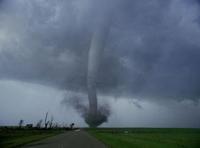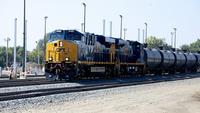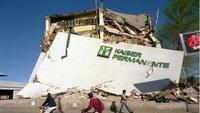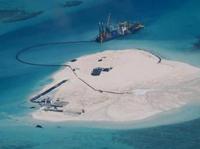-
Syrian Electronic Army’s attack on Reuters makes a mockery of cyber-security (again)

One big security issue that has arisen lately concerns control of news media. National boundaries have become blurred on the Internet, and the control any nation can have over information dissemination has been eroded — on news Web sites but especially on open platforms such as Twitter and Facebook. One lesson from all the attacks on open platforms is that a focus of any attempted hack will be a spear phishing e-mail. Tricking users into entering their details may be simple, but it can be very serious. For example the Reuters site, which was attacked by the Syrian Electronic Army (SEA), a pro-Assad group of “hacktivists,” integrates more than thirty third-party/advertising network agencies into its content. A breach on any of these could compromise the agency’s whole infrastructure.
-
-
Net energy analysis should regarded as a standard policy tool: scientists
It takes energy to make energy, whether it is renewable or a fossil fuel. Net energy analysis gauges the sustainability of energy technologies over time. Net energy analysis provides a quantitative way to compare the amount of energy a technology produces over its lifetime with the energy required to build and maintain it. The technique can complement conventional energy planning, which often focuses on minimizing the financial cost of energy production, Stanford researchers say.
-
-
U.S. Northwest prepares for the Big One
Seismologists believe the Pacific Northwest is overdue for an earthquake that could register at over 8.0 on the Richter scale, leading many emergency management professionals in the region to anticipate and prepare for the devastating impact such an event would have on the local economy. Experts talk about Triple 3 Resilience Target as a the goal for managing the aftermath of an earthquake: have emergency services running within three days; level of services to sustain the economy within three weeks; and a target of three years to stabilize the economy and prepare for future disasters.
-
-
Heavier oil train traffic in western U.S. causes safety worries
In May, following extensive debate regarding security concerns, U.S. Transportation Secretary Anthony Foxx ordered railroads to share oil train shipment information with states, in order better to inform first responders should an accident occur. In the first quarter of 2014 alone, there were 110,000 carloads of oil. Each train can carry three million gallons of oil.
-
-
Tornado threat in Tornado Alley can be eliminated by building walls: scientists

In the United States, most devastating tornadoes occur in Tornado Alley, which is a strip of land between the Appalachian Mountains and the Rocky Mountains, including most American Midwest states. In 2013, there were 811 confirmed tornadoes in the United States, 57 in Europe, and 3 in China. Among 811 tornadoes in the United States, most, especially the most devastating ones, occurred in Tornado Alley. Scientists say that building three 300 meter high and 50 meter wide walls, at the cost of about $160 million each — the first close to the northern boundary of the Tornado Alley, maybe in North Dakota; the second one in the middle, maybe in the middle of Oklahoma and going to east; the third one in the south of Texas and Louisiana – would significantly reduce, if not eliminate altogether, the threat of devastating tornadoes in Tornado Alley.
-
-
As Baby Boomers retire, nuclear industry faces manpower shortages
Many nuclear power plants in the United States are facing an employment and training crisis as their largely Baby Boomer-generation (1946-64) workforce begins to retire. The nuclear industry is making an effort to usher in new and better-trained workers — many from university programs and former military service — to fill in the gaps created by retirement-aged engineers.
-
-
Making nuclear power plants more resilient during earthquakes
Researchers in Finland are examining current nuclear power plants’ structure to see where improvements could be made to make them more resilient during earthquakes. Finland currently is building new nuclear power plants, and within ten years, the country expects to be getting 60 percent of its electricity from nuclear plants.
-
-
N.C. “rolling” 30-year sea level rise report gaining support from both sides
In 2010, coastal developers and Republican legislators in North Carolina were alarmed when a state science panel warned that the Atlantic Ocean is expected to increase by thirty-nine inches along the state’s shores by the end of the century. The state legislature soon ordered a four-year moratorium on official sea-level predictions and gave the Coastal Resources Commission(CRC) guidelines for developing a new official state forecast. In May, Frank Gorham III, chairman of the commission, announced that the next forecast will only predict sea-level rise for the next thirty years, a time span during which model-based predictions about sea level rise along the North Carolina coast – about eight inches — are largely accepted by both sides to the climate change debate. Gorham stresses, however, that he wants a “rolling” 30-year forecast to be updated every five years.
-
-
Experts urge deployment of earthquake warning system in California
Scientists say that California has “99.7 percent chance of experiencing a severe earthquake — magnitude 6.7 or higher on the Richter scale — within the next 30 years.” These scientists are urging Congress to consider funding the full-scale deployment of an early-warning earthquake system on the western coast of the United States following successful testing of a prototype and positive results from similar international systems.
-
-
Groundwater could be polluted with heavy metals by fracking flowback
The chemical makeup of wastewater generated by “hydrofracking” could cause the release of tiny particles in soils that often strongly bind heavy metals and pollutants, exacerbating the environmental risks during accidental spills, Cornell University researchers have found. Previous research has shown 10 to 40 percent of the water and chemical solution mixture injected at high pressure into deep rock strata, surges back to the surface during well development. Researchers found that the same properties that make the mixture so effective at extracting natural gas from shale can also displace tiny particles that are naturally bound to soil, causing associated pollutants such as heavy metals to leach out.
-
-
Details of oil shipments by rail are not security sensitive and should be released: DOT

The boom in U.S. oil shipments by rail is largely due to the growing production of shale oil from the Bakken fields in North Dakota and Montana, but also due to the slow construction of new oil pipelines. U.S. freight railroads are estimated to have carried 434,000 carloads of crude oil in 2013, compared to 9,500 carloads in 2008. In 2014, 650,000 carloads of crude oil are expected to be carried. So far U.S. crude oil shipments by rail have reached a record 110,000 carloads in the first quarter of 2014. Transportation Secretary Anthony Foxx issued an order in May for railroads to provide states with details on routing and oil-train volumes. Last week, U.S. Department of Transportationofficials affirmed that details about volatile oil train shipments are not sensitive security information, thereby allowing states to release such information to the public.
-
-
L.A. to catalog buildings at risk of collapse during a major earthquake

After years of efforts to get officials to catalog buildings at risk of collapse during a major earthquake, Los Angeles City Council late last month instructed building officials to establish a database of such buildings. About 29,226 buildings built before 1978 are subject to survey, but city officials would use mapping programs to narrow down which structures need further field inspection. The city estimates roughly 5,800 buildings are at risk, and an additional 11,690 buildings will need inspection on site to determine whether they are soft-story buildings or not. Los Angeles has yet to decide what to do once it compiles the list, and whether to require retrofitting of vulnerable buildings, but seismic experts and policymakers insist that finding out which buildings are vulnerable is a necessary first step.
-
-
Innovative projects seek emergency housing alternative to FEMA’s trailers

Brownsville, Texas may soon become a model for other hurricane-ravaged cities as community groups institute new emergency housing measures in the wake of inexcusable hold-ups on the part of the Federal Emergency Management Agency (FEMA) in providing reconstruction support to the South Texas coast after $1.35 billion in damage from Hurricane Dolly in 2008.
-
-
Shortage of cybersecurity professionals a risk to U.S. national security
The nationwide shortage of cybersecurity professionals — particularly for positions within the federal government — creates risks for national and homeland security, according to a new RAND study. Demand for trained cybersecurity professionals who work to protect organizations from cybercrime is high nationwide, but the shortage is particularly severe in the federal government, which does not offer salaries as high as the private sector.
-
-
China creates artificial lands in disputed waters to boost sovereignty claims

The Chinese government has been implementing a policy of creating new islands on the reefs and shoals of the South China Sea in order to further Chinese territorial claims to the area and increase sea-based infrastructure. By moving sand and other building materials onto these very shallow reefs, such as the Spratly archipelago, new islands are formed which officials say will eventually support buildings, humans, and surveillance equipment. According to the United Nations Convention on the Law of the Sea, by creating the lands, China will have economic rights within a 200 mile zone of each location.
-
More headlines
The long view
Helping Strengthen America’s Critical Infrastructure
Everyday life depends on a robust infrastructure network that provides access to running water, communications technology and electricity, among other basic necessities. The experts who keep our national infrastructure secure and resilient also need a strong network to share their knowledge and train the next generation of professionals capable of solving complex infrastructure challenges.
AI and the Future of the U.S. Electric Grid
Despite its age, the U.S. electric grid remains one of the great workhorses of modern life. Whether it can maintain that performance over the next few years may determine how well the U.S. competes in an AI-driven world.
Using Liquid Air for Grid-Scale Energy Storage
New research finds liquid air energy storage could be the lowest-cost option for ensuring a continuous power supply on a future grid dominated by carbon-free but intermittent sources of electricity.
Enhanced Geothermal Systems: A Promising Source of Round-the-Clock Energy
With its capacity to provide 24/7 power, many are warming up to the prospect of geothermal energy. Scientists are currently working to advance human-made reservoirs in Earth’s deep subsurface to stimulate the activity that exists within natural geothermal systems.
Experts Discuss Geothermal Potential
Geothermal energy harnesses the heat from within Earth—the term comes from the Greek words geo (earth) and therme (heat). It is an energy source that has the potential to power all our energy needs for billions of years.
